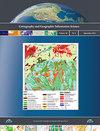Keeping walls straight: data model and training set size matter for deep learning in building generalization
IF 2.4
3区 地球科学
Q1 GEOGRAPHY
Cartography and Geographic Information Science
Pub Date : 2023-11-14
DOI:10.1080/15230406.2023.2264757
引用次数: 0
Abstract
ABSTRACTDeep learning-backed models have shown their potential of conducting map generalization tasks. However, pioneering studies for raster-based building generalization encountered a common “wabbly-wall effect” that makes the predicted building shapes unrealistic. This effect was identified as a critical challenge in the existing studies. This work proposes a layered data representation model that separately stores a building for generalization and its context buildings in different channels. Incorporating adjustments to training sample generation and prediction tasks, we show how even without using more complex deep learning architectures, the widely used Residual U-Net can already produce straight walls for the generalized buildings and maintains rectangularity and parallelism of the buildings very well for building simplification and aggregation in the scale transition from 1:5,000 to 1:10,000 and 1:5,000 to 1:15,000, respectively. Experiments with visual evaluation and quantitative indicators such as Intersection over Union (IoU), fractality, and roughness index show that using a larger input tensor size is an easy but effective solution to improve prediction. Balancing samples with data augmentation and introducing an attention mechanism to increase network learning capacity can help in certain experiment settings but have obvious tradeoffs. In addition, we find that the defects observed in previous studies may be due to a lack of enough training samples. We thus conclude that the wabbly-wall challenge can be solved, paving the way for further studies of applying raster-based deep learning models on map generalization.POLICY HIGHLIGHTS Demonstrates the effectiveness of the proposed data structure with multiple evaluation indicatorsIdentifies a “wabbly-wall effect” a challenge in deep-learning backed image based map generalizationProposes a layered data structure that separates a target building and its surrounding buildings to ease the learning task in training deep learning models for raster-based map generalization.KEYWORDS: Map generalizationdeep learningrasterbuilding simplificationU-Net AcknowledgmentsThe authors also appreciate the comments of four anonymous reviewers which helped improve the paper.Disclosure statementNo potential conflict of interest was reported by the author(s).Data availability statementThe raw maps that support the findings are available by request to Dr Yu Feng (y.feng@tum.de). The codes for U-Net and its variants are from third-party authors who are not affiliated with this manuscript. The codes for data preprocessing and the models adapted from U-Net models are available here: https://doi.org/10.6084/m9.figshare.21901086.v1.Supplemental dataSupplemental data for this article can be accessed online at https://doi.org/10.1080/15230406.2023.2264757Notes1. https://github.com/LeeJunHyun/Image_SegmentationAdditional informationFundingThis research was supported by the Swiss National Science Foundation through project number [200021_204081] DeepGeneralization.保持墙的平直:数据模型和训练集的大小对构建泛化的深度学习很重要
摘要深度学习支持的模型已经显示出它们执行地图泛化任务的潜力。然而,基于栅格的建筑泛化的开创性研究遇到了一个常见的“摇摆墙效应”,这使得预测的建筑形状不现实。在现有的研究中,这种效应被认为是一个关键的挑战。这项工作提出了一种分层数据表示模型,该模型将用于泛化的建筑物及其上下文建筑物分别存储在不同的通道中。结合对训练样本生成和预测任务的调整,我们展示了即使不使用更复杂的深度学习架构,广泛使用的残余U-Net也可以为广义建筑产生直墙,并在分别从1:5 000到1:10 000和1:5 000到1:15 000的尺度过渡中很好地保持建筑物的矩形和平行性,以简化建筑和聚集。通过视觉评价和定量指标(如Intersection over Union (IoU)、分形和粗糙度指数)的实验表明,使用更大的输入张量大小是一种简单而有效的改进预测的方法。平衡样本与数据增强和引入注意机制来增加网络学习能力可以帮助在某些实验设置,但有明显的权衡。此外,我们发现在以往的研究中观察到的缺陷可能是由于缺乏足够的训练样本。因此,我们得出结论,可以解决摇摆墙挑战,为进一步研究基于栅格的深度学习模型在地图泛化中的应用铺平道路。政策亮点通过多个评估指标证明了所提出数据结构的有效性识别了“摇摆墙效应”,这是深度学习支持的基于图像的地图泛化中的一个挑战提出了一种分层数据结构,将目标建筑物与其周围建筑物分开,以简化基于栅格的地图泛化训练深度学习模型的学习任务。关键词:地图泛化、深度学习、构建简化、u - net致谢作者还感谢四位匿名审稿人的意见,他们对本文的改进有所帮助。披露声明作者未报告潜在的利益冲突。数据可用性声明支持研究结果的原始地图可向Yu Feng博士索取(y.feng@tum.de)。U-Net及其变体的代码来自第三方作者,他们与本文无关。数据预处理代码和U-Net模型改编的模型可在这里获得:https://doi.org/10.6084/m9.figshare.21901086.v1.Supplemental本文的数据补充数据可在https://doi.org/10.1080/15230406.2023.2264757Notes1在线获取。本研究由瑞士国家科学基金会资助,项目编号[200021_204081]deep概化。
本文章由计算机程序翻译,如有差异,请以英文原文为准。
求助全文
约1分钟内获得全文
求助全文
来源期刊
CiteScore
5.20
自引率
20.00%
发文量
23
期刊介绍:
Cartography and Geographic Information Science (CaGIS) is the official publication of the Cartography and Geographic Information Society (CaGIS), a member organization of the American Congress on Surveying and Mapping (ACSM). The Cartography and Geographic Information Society supports research, education, and practices that improve the understanding, creation, analysis, and use of maps and geographic information. The society serves as a forum for the exchange of original concepts, techniques, approaches, and experiences by those who design, implement, and use geospatial technologies through the publication of authoritative articles and international papers.

 求助内容:
求助内容: 应助结果提醒方式:
应助结果提醒方式:


